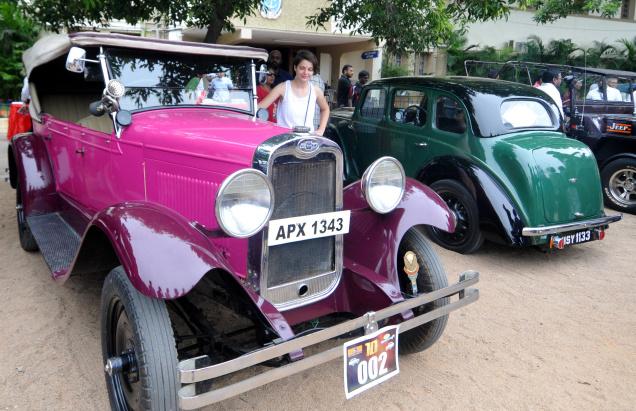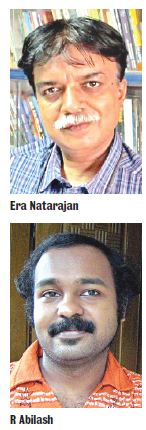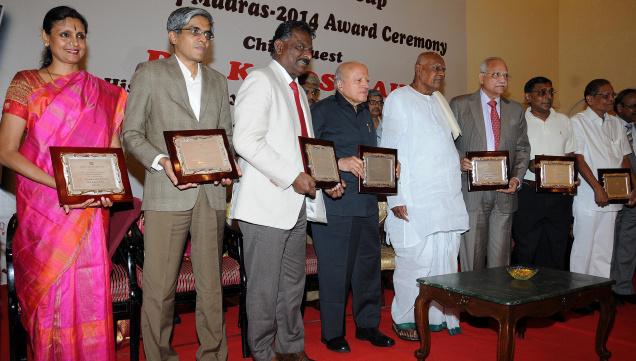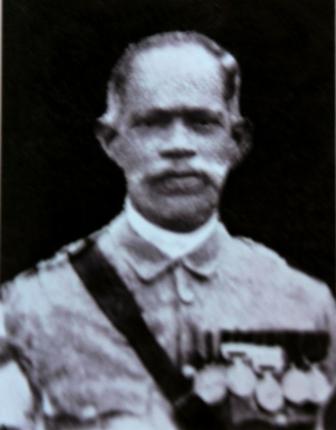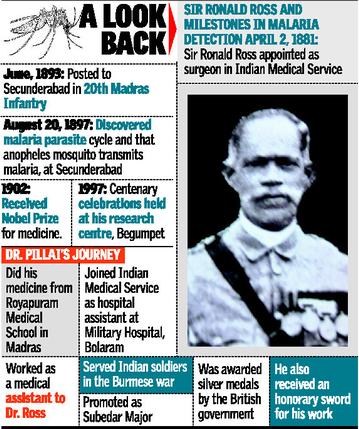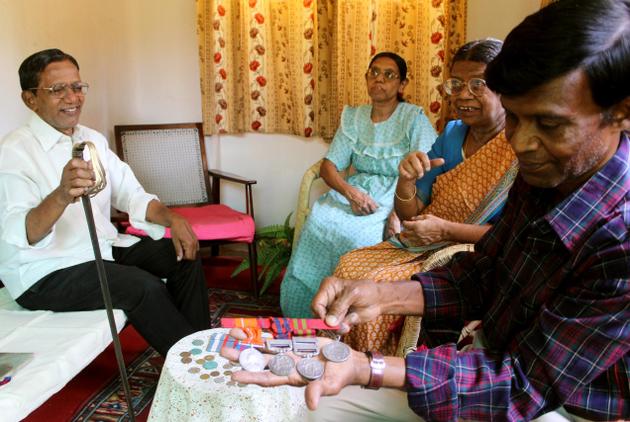Yet today, 1,000 years later, the Chola Empire is remembered only by a handful of specialist historians. If it had been European, or had given its name to some still-surviving nation, things might be different. But despite 400 years of glory, the Chola Empire disappeared from history; a sad fate for a civilisation which was among the most remarkable produced by the medieval world.
In some ways, it was the most significant of the dozen or so empires which rose and fell during India’s long, tumultuous history. It lasted some 460 years, longer than any of them. The Chola was also the only Asian empire (bar the Japanese) to have indulged, albeit briefly, in overseas expansion. It conquered Sri Lanka, the Andaman and Nicobar islands and, temporarily, parts of south- east Asia – the islands of Sumatra, Java and Bali, and the southern part of the Malay peninsula.
Most of these overseas conquests are shrouded in mystery. All that is known is that, in 1025, the Chola emperor Rajendra I dispatched an army, presumably on a large fleet, across 2,000 miles of ocean to conquer the southern half of south-east Asia. The records show that he succeeded and received the submission of large numbers of cities. Some historians believe that the Cholas then simply sailed back to India, but others suspect that Chola power persisted in some form in south- east Asia for two or three generations.
Certainly, the Chola conquest contributed
to a long process that had already started and which linked southern India and south-east Asia together in terms of trade and religion. The Indonesia/Malay region was a pivotal point in trade between China and India (and, indeed, the West), and both Java and Bali were largely Hindu. Rajendra’s conquest was perhaps the first military expression of a more general connection which had been developing for centuries.
Closer to home, in Sri Lanka, the Cholas’ overseas expansion is better documented – both in text, and in stone. Tourists today can still explore the great ruined city of Polonnaruva, founded by the Cholas as a capital for their newly conquered island territory.
But the emperor’s armies didn’t only head southwards. In the early 11th century, Chola forces marched almost 1,000 miles through India to the banks of the Ganges. Like the south-east Asian conquest, this epic ‘long march’ is also shrouded in mystery. Whether the emperor’s objectives in marching an army to the sacred river were political or purely religious is unknown. Certainly, the north of India, though temporarily subdued, was not incorporated into the empire – although holy Ganges water was carried back to a great new capital named in honour of the sacred river, and the ruler who had conquered it.
This capital was called Gangaikondacholapuram – literally ‘the City to which the Chola emperor brought the Ganges’. At the centre of their new metropolis, the Cholas built a magnificent temple and a vast three mile-long reservoir symbolically to hold the ‘captured’ waters of the Ganges. Both have survived. Under Chola rule, religion and politics grew ever closer together, with the emperor projecting himself as the representative, almost a manifestation, of God on Earth. Large temples were built, for the first time, as royal establishments. The Cholas probably built more temples than any other Indian kingdom or empire. Each temple was a masterpiece. Even today, the Chola heartland – along the Kaveri River in the state of Tamil Nadu – is full of beautiful, delicately carved temples, some the size of tiny chapels, others as big as European cathedrals. In the very centre of what was the empire, there are still 40 Chola temples in an area half the size of greater London. The most spectacular structure is the 63m-high pyramid- shaped central shrine in the city of Thanjavur, the Chola capital before Gangaikondacholapuram.
Chola art and architecture were among the finest in the world. Indeed, in cast bronze sculpture and hard-stone sculpture, Chola art is unsurpassed. Millions of figures, deftly carved in granite, can still be seen on their temples, while in museums, in Thanjavur and Madras, visitors can marvel at the artistry and craftsmanship of the bronze figurines and statues.
The Cholas not only nurtured an artistic boom; they also fostered a massive expansion in education. Political stability and imperial grants – both to the temples which ran education and to the students themselves – led to the expansion of local schools and elite colleges for higher castes. The education system – which operated from a religious perspective but also promoted literacy, mathematics and astronomy – was probably, at least in part, responsible for the development of a competent imperial administration and broadened international horizons. Some estimates suggest that literacy rose to around 20 per cent – perhaps the highest in the medieval world.
An unplanned result of this high level of education was an increase in intellectual dissidence. One of the greatest Indian religious thinkers – the 11th-century philosopher Ramanuja – was a product of the Chola empire, although he was ultimately expelled for his views. In many ways, he can be seen as the founder of Hindu monotheism with his belief in a unitary personal god, the ultimate font of love and compassion.
In the 12th century there flourished an even more dissident religious movement. The Lingayats professed a sort of cynical humanism which questioned the very fundamentals of religion – the authority of India’s holy books, the Vedas (the equivalent of the Bible), and reincarnation itself. Socially, they were also radical, challenging the taboo on widows re-marrying, and condemning child marriages. This dissident movement derived much support from the lower castes.
The empire also increased the importance and institutionalisation of local government. Each group of five to 10 villages had an elected district council, which in turn had endless subcommittees dealing with everything from land rights to irrigation, law and order to food storage. Every household in a district had the right to vote – and the councils enjoyed considerable power. The Chola emperors encouraged their development, probably as a counter-balance to the power of local vassal rulers, who owed obedience to the empire.
Although the Cholas ruled for more than four centuries, they did so with a remarkable light touch. Local responsibility for local affairs was encouraged, and newly conquered local rulers were allowed to keep their titles and lands, though under ultimate Chola control.
The light touch was brought even to waging war. The Cholas exemplified the Indian principle of war – the dharma yuddha, literally, the principle of the fair fight. Battles were normally pre- arranged and fought in daylight on a level field between equal numbers of troops. Defeated princes could carry on living and prospering, but had to pay homage and cough up tribute for the emperor’s treasury and women to act as concubines and courtiers.
Presiding over this mixture of autocracy and democracy, a cocktail of religious orthodoxy and dissidence, and a surge of artistic creativity – not to mention their concubines – the Chola emperors considered themselves the rulers of the world. They did, of course, look on India as the Continent of the Cosmos.
Yet now they are forgotten, their achievements ignored by the world. There is not one book in print on the Chola Empire; nor a travel-company tour to most of their extraordinary temples.
Where to go and what to see
*** spectacular ** very interesting * interesting
1 CIDAMBARAM ** Spectacular Chola temple with rich sculpture, a magnificent pavilion with 984 pillars, and a shrine to the sun god complete with stone chariot wheels. Here, one of the Hindu trinity of gods, Siva, is said to have performed his cosmic dance of joy. A delightful story has it that Siva’s wife, Parvati, challenged him to a dance contest, which took place where the temple now stands. Siva won by way of a clever ruse. He contrived to drop his earring so that he could pick it up and put it back with his toe; his spouse was, however, too modest to raise her leg – and lost.
2 DARASURAM ** Marvellous temple built by the Chola Emperor Rajaraja II in the mid- 12th century. One beautiful pavilion – in imitation of a war chariot – has wheels and rearing horses. See also relief portraying the lives of the 63 saints of the god Siva.
3 GANGAIKONDACHOLA- PURAM *** See the magnificent and richly sculpted Brihadishvara Temple, built of granite as the centrepiece of a new Chola capital in circa AD1025. The main shrine is 160ft (50m) high. The three-mile 11th-century Cholaganga reservoir (for sacred water) also survives.
4 KALIYAPATTI * The ‘Place of Stone’. Small temple, c 900.
5 KILAIYUR * Double shrine, c 900.
6 KODUMBALUR ** Triple shrine, c 900.
7 KUMBAKONAM ** Beautiful sculptures of female dancers and musicians, the sun god and the god Siva – in the form of a divine young ascetic – adorn the Nagesvara Temple, built c 870. According to legend, this riverside temple was built where a pot was washed ashore containing the seed of creation and the Hindu bible.
8 MELAKKADAMBUR ** Chola temple, c 1100, with magnificent sculptures of mythical animals, dancing women and sages.
9 NARTTAMALAI ** Constructed c 870, the Vijayalaya Cholesvara Temple is said to have been built by the first Chola emperor, Vijayalaya.
10 PANANGUDI * Chola temple built c 900.
11 POLONNARUVA (in Sri Lanka) *** Ruins of a great city founded as a new capital for the island by the Chola emperor Rajaraja following his conquest of Sri Lanka in 993. Visit the many medieval buildings, including two Chola temples. Because they are not functioning temples, it is possible to visit the sacred innner sanctums, where one can see examples of that most important of Hindu symbols, the stone obelisk called the lingam. It represents the creativity and fertility of the human phallus and the safety and shade of the archetypal tree.
12 PULLAMANGAI ** One of the most beautiful of all Chola temples, c 910. Perfectly preserved, with miniature relief.
13 SRINIVASANALLUR ** See the 10th-century temple of Koranganatha – the Lord of the Monkey. Beautiful sculptures of medieval worshippers in their aristocratic clothes.
14 SRIRANGAM *** This most important temple to the god Vishnu in southern India has exquisite carvings of female musicians. It is dedicated to a young girl called Andal who became enraptured with Vishnu.
15 SWAMIMALAI ** Regarded, mythologically, as a sort of divine weapons store, this Chola temple is dedicated to the war god Murugan.
16 THANJAVUR (also spelt Tanjore or Tanjavur) *** Once the capital of the Chola empire, this town is home to the greatest of all Chola buildings – the Rajarajesvara (or Brihadishvara) temple. Built in AD1010 by the emperor Rajaraja the Great, it is 210ft (63m) high – the tallest temple in all India. On top of its sumptuously sculpted pyramid-shaped tower is an 80-ton cupola, said to be fashioned out of a single block of granite placed there with the aid of a four-mile temporary ramp.
17 TIRUKANDIYUR * Small Chola temple.
18 TIRUKKATTALAI * The ‘temple of the holy command’, c 900.
19 TIRUPPUR * Temple, c 900.
20 TIRUVAIYARU * By uttering the mystical (and apparently meaningless) word ol, the Chola poet Sundarar succeeded in parting the waters, Red Sea style, of the Chola heartland’s great river, Kaveri, so that he and a visiting king could praise the god Siva at the temple of Tiruvaiyaru on the other side.
21 TIRUVANNAMALAI ** This temple – with stone sculptures depicting 108 classical Indian dance poses – was built in the place where Siva turned himself into what he claimed was an eternal unending pillar of fire.
22 TIRUVARUR * The temple is built at the legendary scene of a great Chola miracle of death and resurrection. The son of a Chola king – out joyriding, as princes will, in one of the royal chariots – ran over and killed a calf. A somewhat distraught cow – the calf’s mother – complained to the king, who was furious and decided to punish his son by killing him. Understandably he found this difficult, indeed morally impossible. So, obligingly, the king’s prime minister carried out the execution. Filled with sadness, both prime minister and king committed suicide. But all was not lost, for the god Siva decided to resurrect them all.
23 TIRUVELVIKKUDI * See the temple of Manavalesvara.
24 TRIBHUVANEM ** See the Kampaharesvara temple, built by the Chola emperor Kulottunga III in c 1200.
25 VIRALUR * See the Bhumisvara temple, c 880.
26 VISALUR * Small temple.
FURTHER INFORMATION
The Bharatiya Vidya Bhavan (Institute of Indian Culture) at 4A Castletown Road, West Kensington, London W14 9HQ (tel: 071-381 3086/4608) has information on Chola culture, including folklore, music and temple dancing (the institute puts on performances).
FURTHER READING
Architecture and culture: Guide to the Monuments of India, Volume 1 by George Michell (Penguin pounds 18.99), invaluable encyclopaedic gazetteer; The Art and Architecture of the Indian Subcontinent by J Harle (Yale pounds 16.95), in the Pelican History of Art Series, the best general survey; A History of India, Volume 1 by R Thapar (Penguin pounds 6.99); Hindu Art, T R Blurton (British Museum Press pounds 14.95); The Hindu Temple by George Michell (Chicago pounds 11.95), readable introduction to temple architecture; Hindu Myths translated by Wendy O’Flaherty (Penguin pounds 6.99); Hinduism by K Sen (Penguin pounds 5.99), excellent – and short – introduction.
Guidebooks: India: A Travel Survival Kit (Lonely Planet pounds 13.95) – a new edition is due in July; South India (APA Publications/Insight pounds 11.95); South Asian Handbook (Trade and Travel pounds 18.95), the best general guide.
Travel accounts: No Full Stops in India by Mark Tully (Penguin pounds 6.99), a recent view of India by the BBC’s long-time correspondent; India: A Million Mutinies Now by V S Naipaul (Minerva pounds 6.99), the latest of Naipaul’s excellent personal impressions of India; On A Shoestring to Coorg by Dervla Murphy (Arrow pounds 5.99), lively exploration of the South.
All titles available from good bookshops, and by mail order from Daunt Books for Travellers, 83 Marylebone High Street, London W1M 3DE
(071-224 2295). DK
source: http://www.independent.co.uk / The Independent / Home> Arts + Ents / by David Keys / Sunday – May 09th, 1993
